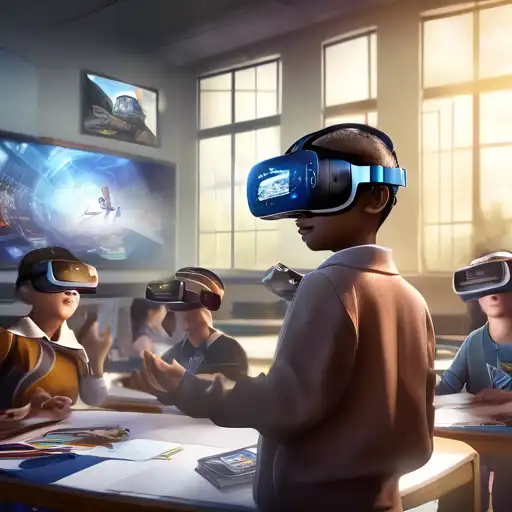Introduction to Virtual Reality in Education
Virtual Reality (VR) is revolutionizing the educational landscape, offering immersive learning experiences that were once unimaginable. This technology transports students to virtual worlds, making learning more engaging, interactive, and effective. As we delve into the potential of VR for education, it's clear that we're standing on the brink of a new era in teaching and learning.
The Benefits of VR in Educational Settings
VR in education offers numerous benefits, including enhanced engagement, improved retention rates, and the ability to simulate real-world scenarios. Students can explore historical events, dissect virtual frogs, or even travel to outer space, all from the safety of their classroom. This hands-on approach caters to various learning styles, making education more accessible to everyone.
Engagement and Motivation
One of the most significant advantages of VR is its ability to captivate students' attention. Traditional learning methods often struggle to maintain engagement, but VR's immersive nature ensures that students are not just passive recipients of information but active participants in their learning journey.
Accessibility and Inclusivity
VR technology has the potential to make education more inclusive. Students with physical disabilities or those who are unable to attend traditional schools can benefit from virtual classrooms. This democratization of education ensures that learning opportunities are available to all, regardless of physical or geographical limitations.
Implementing VR in Schools: Challenges and Solutions
While the benefits are clear, implementing VR in educational settings comes with its set of challenges. High costs, technical requirements, and the need for teacher training are significant hurdles. However, with the rapid advancement of technology and the decreasing cost of VR equipment, these challenges are becoming increasingly manageable.
Cost-Effective VR Solutions
Organizations and educational institutions are finding innovative ways to integrate VR into their curricula without breaking the bank. From using smartphone-based VR headsets to partnering with tech companies for funding, the barriers to entry are lowering, making VR more accessible to schools worldwide.
The Future of VR in Education
The future of VR in education is bright, with endless possibilities for innovation. As technology continues to evolve, we can expect more personalized and adaptive learning experiences, further enhancing the effectiveness of education. The integration of AI with VR could lead to even more dynamic and interactive learning environments, tailored to each student's needs and preferences.
Preparing for a VR-Driven Educational Landscape
Educators and policymakers must prepare for this shift by investing in infrastructure, training, and content development. By embracing VR, we can ensure that the next generation of learners is equipped with the skills and knowledge to thrive in an increasingly digital world.
Virtual Reality is not just a tool for entertainment; it's a powerful educational resource that can transform how we teach and learn. By leveraging VR, we can create more engaging, inclusive, and effective learning experiences, paving the way for a new era in education.
